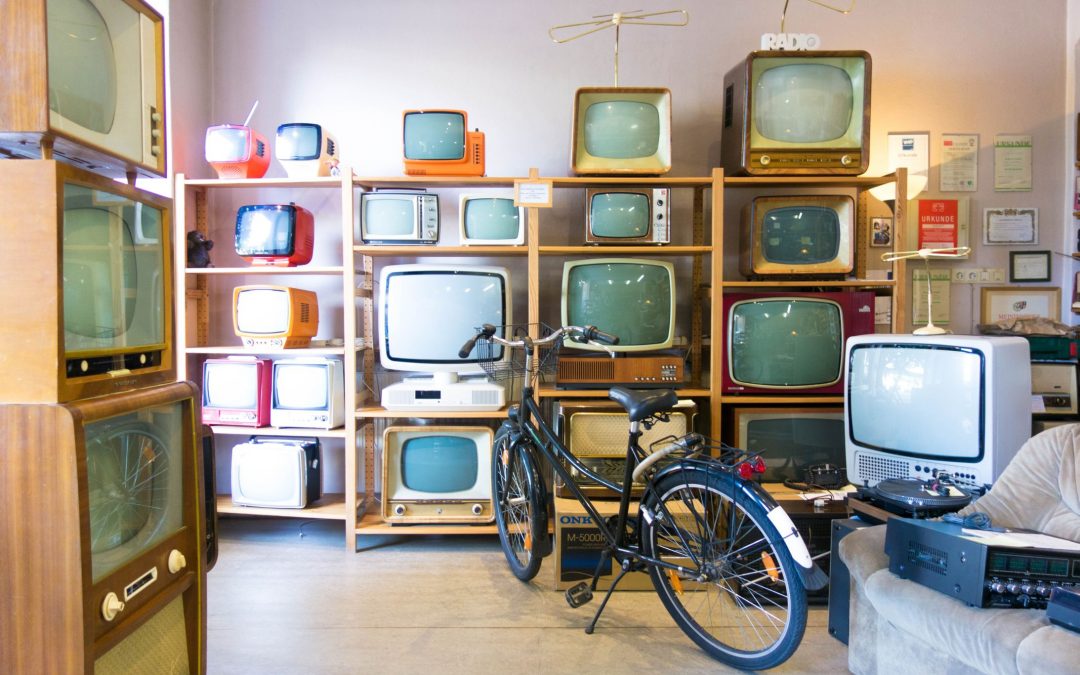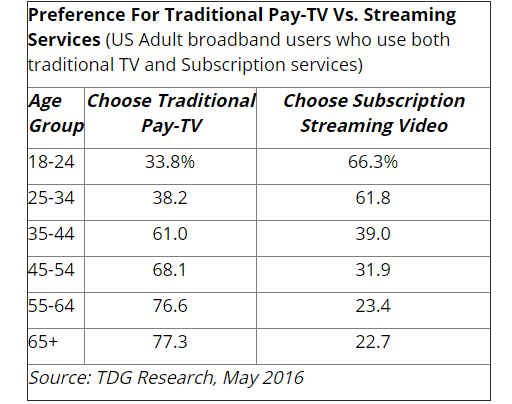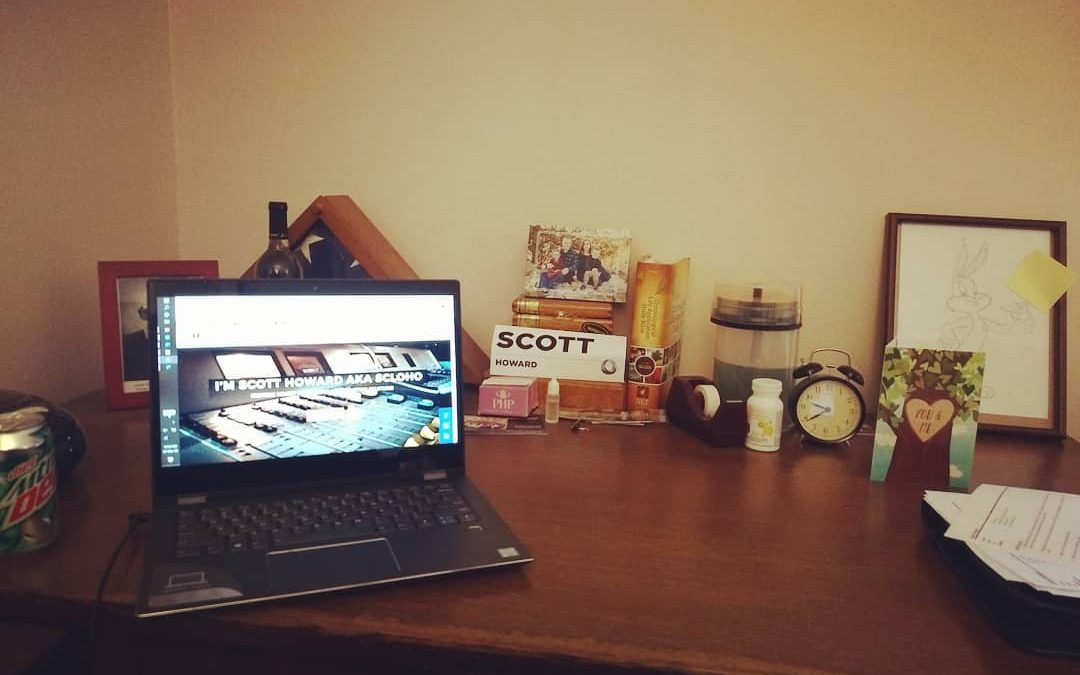
by Scott Howard | May 24, 2018 | Marketing and Advertising Insights, ScLoHo's Collective Wisdom, The Not-So-Secret Writings of ScLoHo, Uncategorized, WOWO Fort Wayne Radio Advertising with Scott Howard
As we head into the unofficial summer season of June, July and August, the three months between Memorial Day and Labor Day, I want to address a headline I saw again and give you an insiders perspective on The Decline of Mass Media.
Why talk about it now? Well, television viewing habits in years past were different during summer time, with the major networks showing summer reruns instead of new episodes. But hang on because I’m getting ahead of myself.
What is mass media anyway? Perhaps traditional media is a better term. Television, Radio, Newspapers and Magazines are the traditional media that have been the mainstay since the 1950’s and before.
Newspapers are continuing to struggle. Lay offs and shut downs have been occurring for nearly two decades, due to the rise of the internet. One story I read this month blamed the owners for cutting staffs.
The Denver Post cut the newsroom from 184 journalists to 99, according to the story. Other cuts at other newspapers were also harsh. 73 reporters down to 10 while another paper went 45 to 12 journalists. Locally in Fort Wayne, the afternoon paper ceased publication, and instead gets one sheet in the morning paper and an online edition. I saw friends of mine in the newspaper business in town leave either on their own or due to cutbacks. I was once tempted about 8 years ago to work for their online division but am grateful I stayed put.
The company I work, Federated Media sold the one newspaper they owned a couple years ago because it was nearly impossible to be profitable.
When I say the internet is the reason for the decline in print, it’s really a combination of things related to the internet.
Accessibility for one. 20 years ago most of us owned a desktop computer with a dial-up modem at home, if we had a home computer. 12 years ago laptops took over as the primary personal computer device. And did you realize that the first iPhone debuted in 2007, ushering in the smartphone revolution?
Online Content is the other contributing factor. No need to wait for the morning paper to check the weather or the score. Newspapers have tried to replace their dwindling subscriber numbers with paywall subscriptions, but the math doesn’t work. If you don’t have the readers, the advertisers will also go away and the decline has been going on for too long.
Declines in the magazine publishing industry are similar. What seems to have survived in print is specialized publications. Smaller but targeted readership than mass media.
Another way the internet has changed the media is the television industry. The New York Times featured a story that I read online about the future of broadcasting: Why Traditional TV Is in Trouble.
Here’s a few quotes:
Ratings are on the decline, especially among young people, some of whom don’t even own televisions. It’s hard to keep up with the many devices and apps people now use to watch shows. And there is a host of material from Silicon Valley that is competing for viewers’ attention, including Google’s YouTube, Facebook and Netflix. It all adds up to a precarious situation for broadcast TV.
Advertising on TV has long been the best way for marketers to reach a large number of people at one time. And it is still a formidable medium. But cracks are showing.
and:
The hottest shows on TV networks — which command the highest ad prices — are attracting older viewers, which is a challenge for brands that want to reach millennials and teens. For instance, this season’s top-rated show, the revival of “Roseanne,” has a median viewer age of 52.9 years. The network show with the lowest median age is “Riverdale” on the CW, at 37.2.
The TV networks will be able to survive by reinventing themselves much like radio stations did when television became a media force last century. But the local TV stations? My advice if you want to reach anyone younger than Baby Boomers, good luck. All of my kids are in their 30’s and none of them are watching broadcast TV, some don’t even own a television. They get their video content online. Even my wife and I watch just as much video content on something other than a TV or if we do, often it’s days later and the local ads are not even seen.

So what is taking the place of traditional broadcast TV as a mass media?
Netflix, Amazon Prime Video, YouTube, to name a few. Alternatives to cable like Sling, Hulu and Roku. These are all offering the best of both worlds for advertisers. You get to reach people watching video content but you get to target your ads to specific audiences, one of the technical marvels of the internet.
Here’s a quote from a newsletter I received from Google:
More than half of 18 to 49-year-olds in the U.S. either don’t watch a lot of TV or do not subscribe to TV. But that doesn’t mean TV content and TV screens are on their way out. In fact, the TV screen is the fastest growing screen for YouTube content, with 70% growth in the last two years.
Let me address the radio broadcasting industry too. It was the first broadcast mass media and WOWO radio, the station I work for is over 90 years old. There are two categories of traditional broadcast radio stations these days, and I’m not talking about AM and FM. The two categories I am referring to are talk based programming and music based programming.
Radio broadcasting started out with network radio shows from NBC, CBS, ABC and the Mutual Broadcasting System and eventually they evolved to what we have today.
In Fort Wayne, Indiana, there are 37 radio stations within close listening range. Some are duplicates of the same programming on different signals, like WOWO 1190 AM is the same as WOWO 107.5 FM, so let’s say there are 25 separate and individual choices. This is also a way of targeting your advertising. The best local radio stations keep an emphasis on local content, stuff you can’t get by listening to Spotify or Pandora.
Federated Media has 6 stations in Fort Wayne, four are music based, two are talk. I work for the talk stations, WOWO and our ESPN affiliated station. Both offer a combination of local and national programs. There are specific characteristics of WOWO listeners that help me determine if advertising on WOWO would be a good idea. Want to reach grown-ups? Let’s talk. Want to reach teenagers? I’ll connect you with someone who works for one of our music stations.
Not all radio stations and radio broadcasting companies are the same. Overall radio listenership has remained pretty steady for the past decade. Over 90% of everyone age 12 and older listens every week. However smart radio stations and companies are staying ahead of the trends that we see going on around us.
For years, radio stations like WOWO offered a way for you to listen via the internet. Go to WOWO.com and click on the listen now tab and you can stream WOWO on your computer. There are plenty of apps that offer access to radio stations like WOWO, and some people listen to WOWO via the WOWO app itself.
2018 however is the break thru year for Alexa and Google Home smart speaker systems. We are seeing a resurgence in radio listening simply by telling the smart speakers to play WOWO and poof, there’s Pat Miller in the afternoon or Charly Butcher in the morning, in your kitchen, just like 40 years ago when I was a kid and my parents had clock radios in their house.
One last way radio stations like WOWO are staying on top of the trends is podcasting. WOWO and our other Federated Media stations share both content from our live shows online in podcast form, but also we have some podcast only shows that are available via iTunes or what ever your favorite podcasting player is. Podcasting is huge and we can connect businesses to podcast listeners too.
The title of this today was The Decline Of Mass Media. As I’ve laid out what’s going on in print and broadcasting in response to the web connected world we live in, I hope you see as I do, these are exciting times. The traditional mass medias that are adapting are going to done fine while the others struggle and will be a mere shadow of their former selves.
Fortunately, I get to work with a company that continues to be on the leading edge and I get to offer advertising and marketing solutions that work using WOWO radio and our digital marketing division of Federated Media.
Want to see how I can help your business grow this year and next? Contact me.
One final piece that I’m going to share because it was posted on LinkedIn by Ben Saurer, WOWO radio’s General Sales Manager that demonstrates how WOWO truly is a leader. Ben’s job is to hire, coach and lead an advertising sales team. Quite frankly, most media companies struggle with this, but as you will see, WOWO is different, in a good way. Here’s what an excerpt from what Ben wrote:
All my people earn above the industry average. Client retention is high. Everyone on my staff is generating more revenue than last year. We’ve had ZERO sales staff turnover in 2+ years while having our market’s largest sales staff. People perform and like working here.
Remember the story I shared about the newspapers cutting their staffs to try and save themselves from going under? Completely different story here at WOWO.
by Scott Howard | Dec 20, 2016 | Marketing and Advertising Insights, ScLoHo's Collective Wisdom, The Not-So-Secret Writings of ScLoHo
Recently I shared the story of the death of the newspaper industry. It was a combination of a personal story and an article about the financial health and business model of the newspapers that has attempted to stay alive by adapted to our technology driven world. Click here to read it if you care. 
Today, I have more on the Evolution of Traditional Media, and this time it’s about TV. An article published by Mediapost says the Future of TV is Now. (Actually since the article came out 4 weeks ago, I should say the Future of TV was 4 weeks ago.)
I’ve talked about the splintering of audiences numerous times over the years and yet some in the broadcasting world are attempting to hang on to the old models. In Fort Wayne, Indiana we saw an out with the old and in with the new kids shift occur on a couple of the TV stations that shuffled their news departments so much during 2016 that no one knows who’s where, but more importantly does anyone care?
I am officially older than dirt, I guess but now I’m old enough that my gray hair is age appropriate, unlike 30 years ago. But back to the subject of television and our viewing habits. Here’s a few quotes:
The evolution of TV and video habits has meant that traditional user groups, such as the TV Couch Traditionalists, have shrunk by more than 30% since 2010, in favor of user groups such as the Mobility Centric and Screen Shifters.
Who are these groups? TV Couch Traditionalists would have been me as a kid in the 70’s. You watch what’s on when it comes on. You watch in the living room or family room. ABC, CBS, NBC and PBS were the ONLY networks. That expanded over the years with Cable TV, but that cable kept you sitting on the couch.
Mobility Centric and Screen Shifters sprung up when the technology was developed to watch what I want from nearly any source when ever I want.
But beyond these labels, here’s a few more tidbits:
Since 2012, the average consumer has increased their viewing on mobile devices by 4 hours a week, while their fixed screen viewing has declined by 2.5 hours a week. This means that today they spend an extra 1.5 hours watching TV and video than they did 4 years ago.
So traditional tv viewership has dropped by 2.5 hours a week. That’s tough news for broadcast television stations. And if you are advertising on traditional TV, the available audience to see your message continues to shrink. Sure we watch more video but not on the old boob tube as my Dad referred to the tv.
The viewing traditions of TV and media consumers are clearly changing, with the media industry introducing new types of content and formats. Just as the preferences for how to watch TV and video content are changing, so is when and through which screen the content is viewed.
The article points out generational differences comparing those 35 and under to the rest of us and while there are always exceptions, my advice is if you want to reach the millennial generation with your advertising messages, you probably ought to skip traditional TV and look at other online digital and video platforms. Notable exceptions might be certain live sports events, but I can watch those on my laptop, so never mind.
Want help on figuring out the advertising, marketing and media landscape and options that would work best for you? Contact me.
by Scott Howard | Sep 5, 2016 | Marketing and Advertising Insights, ScLoHo's Media, The Not-So-Secret Writings of ScLoHo
I recall a few years ago watching the Emmy awards and wondering if any of the major broadcast networks were going to win any awards.
By broadcast networks, I mean the networks that you can watch over a traditional television without cable or internet. In most cities that includes ABC, CBS, NBC and sometimes FOX, CW and MY networks. PBS too.
As I was reviewing emails from the summer I saw one from MarketingCharts/MediaPost that pointed out a generation gap in how we watch. This study actually counts satellite and cable tv as part of the traditional tv group

From the looks of it, it appears that the current batch of 40 year olds are at the age of switching from watching live traditional TV to other delivery methods such as streaming or delayed viewing on other devices.
My kids are definitely watching plenty of streaming video compared to traditional television. My wife and I are over 50 and we watch streaming video too because of the convenience of it.
My guess is that the switch is not just because of our ages, but the switch will accelerate as more and more older adults become aware of the choices they have.
And now a note of caution for the businesses that are relying on their local television stations to advertise with… The audience isn’t just getting older, it’s shrinking too and will not be coming back.
How much traditional TV did you watch over this Labor Day Weekend versus how much streaming video did you view?






